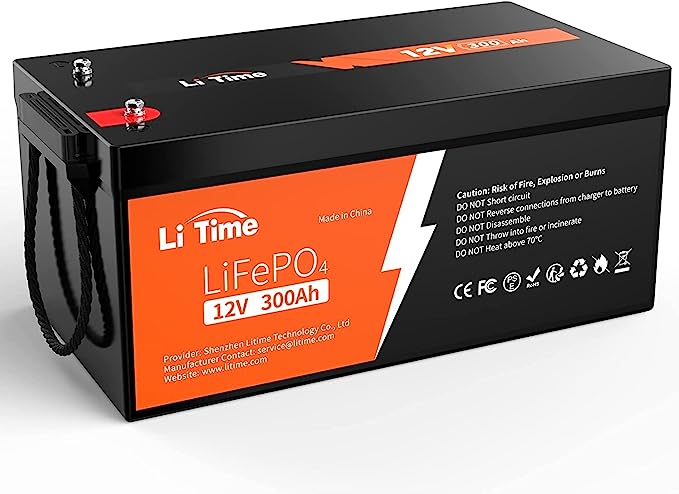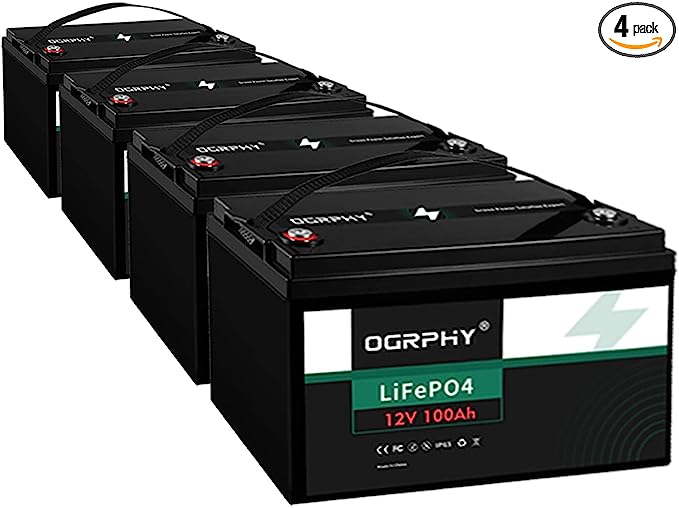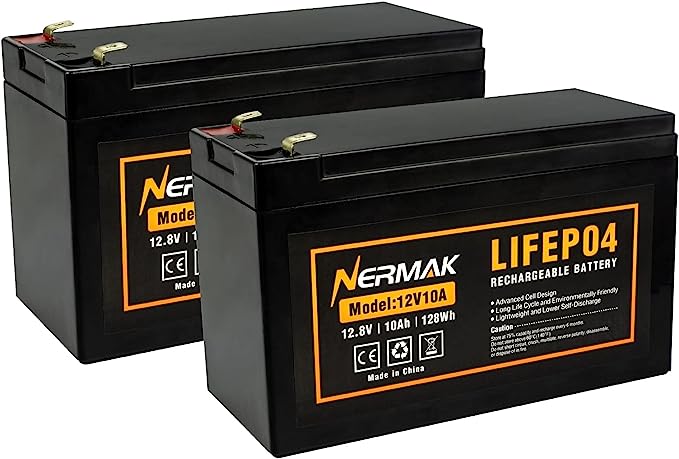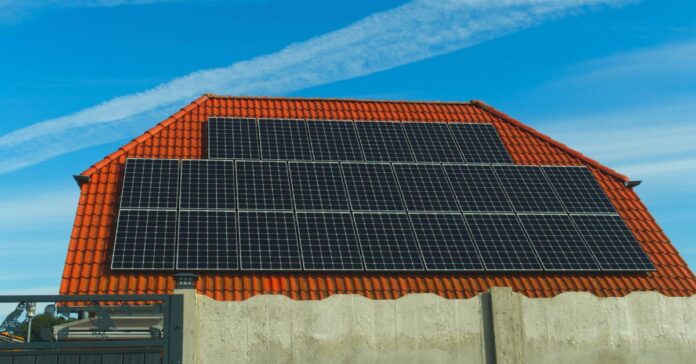Solar panels are the best alternative for green energy, but how solar energy is stored? As many still thing this storage isn’t possible, there’s many ways to store this renewable energy, using batteries or not. Check out the available options.
How solar energy is stored?
When we store the energy produced by photovoltaic panels in batteries, we are using the off grid system, i.e., without connection to the grid.
The DC (direct current) energy is converted into AC (alternating current) by the inverter and then fed into the battery set, first passing through the charge controller. This is a device that manages the energy distribution between the batteries more efficiently. After this, the energy can now be distributed to supply the building’s needs.
What are the three storage methods of solar power?
Batteries are the ideal way to store solar energy, but the types vary, as we have already seen. They are lead-acid, cadmium-nickel, and lithium-ion batteries.
The first are very similar to those used in conventional cars. The other, lithium-ion, is used in electric cars and for recharging cell phones and laptops. We will analyze each of them and then talk about the hybrid system, called Solar Nobleak.
Lead-acid battery
The lead-acid battery is a pioneer in solar energy storage. It consists of two electrodes: one of powdered lead dioxide and the other of spongy lead. Even for storing solar energy, which is economical and sustainable, the high costs do not match its durability.
Nickel-cadmium battery
The nickel-cadmium battery can be recharged several times. But still, its costs are high when compared to its durability. It is widely used for the operation of camcorders and cell phones.
In any case, it fulfills its function of storing the energy produced by the photovoltaic system. Its cost-benefit is not so advantageous, but it is better than the lead-acid battery.
Lithium-ion battery
The lithium-ion battery has greater power and durability, and is a great option for storing photovoltaic energy. It works in a reactive way, with a lot of energy, in batteries that are getting smaller and lighter.
It is possible to charge the battery partially, without having to wait until it is completely discharged.
How long can solar energy be stored in a battery?
Talking about the average time solar energy can be stored in a battery ranges between 1 to 5 days, but the exact answer depends on serveral factors, like:
- The battery type and its efficiency
- Your region solar’s inciency
- Your electricity use
How long is solar energy stored?
Considering a fully charged situation, most current battery models can handle up to 5 days without needing to be recharged. However, there is already a Tesla solar battery model that can power a household for 7 days.
How long do solar batteries last?
The service life of a solar power battery is 15 years. Depending on the model, this can vary from 5 to 25 years.
This time will vary with the components of the product, the environment where these batteries are installed, and the proper maintenance of your equipment.
How many solar batteries are needed to power a house?
As you can imagine, is not easy to predict how many solar batteries will be needed for your specific home, but let’s try to dig into some numbers to find parameters.
So, a typical American house might require some between 4-16 solar panels. The need depends on your home sise, people who live in it and the power usage. An elderly couple’s home probably use much less energy than a professional game streamer, for example.
Considering US Energy Information Administration (EIA), the average eletricity consumption in the US is like 877 kilowatt-hours (kWh) by month. If we do the maths by day, we get something like 29 kWh a day. So what?
Let’s look to the solar energy battery market. We have many models, so it not an obvious answer, but in a general overview, the batteries can store like 4-16 kilowatt-hour.
So, if you’re in the American average, any number between 2 and 7 batteries should match your needs, considering the battery capacity you’ll be able to have.
Cheapest way to store solar energy
The cheapest way to store solar energy currently are the lead acid batteries.
The cheapest way to store solar energy currently are the lead acid batteries. While lithium-ion batteries can cost around $5,000 to $15,000, the lead acid batteries cost $500-$1000.
Starting with battery type can be a good start to experiment solar panels, but they are cheaper because of a efficiency limitation: while lead acid batteries can last for around 1500 cycles, lithium-acide batteries have a 3000 cycles duration.
Storing solar energy without batteries
When we think of the off-grid system, in which the panel system is isolated and serves only your home, it is impossible to store solar energy without batteries.
However, in the on-grid system, this is not only possible, but also very advantageous.
What makes on-grid system so likeable is that all the houses in the region are connected to the same solar power distribution network, feeding the same generator.
In this case, the energy is not stored in batteries in your house, but in the distribution network equipment, which can generate absurd savings.
The money saved with on-grid solar panels happens because the surplus energy becomes credits for the household that generated that energy, so that it does not have to pay more for energy that it has already generated, generating an average saving of 95%.
Can solar panels ever be 100% efficient?
Efficiency is one of the most important factors in a photovoltaic module. It determines the panel power generation capacity.
In other words, efficiency shows the panel potential to convert sunlight into electrical energy. The most popular solar panels have a 16.5%/m² efficiency
This indicates that from the total amount of light captured by the panel, 16.5% of the total energy that falls on it per m².
Therefore, the greater the power of the panels acquired for a system, the greater the amount of energy generated per square meter with the same light incidence.
The panels efficiency is informed by the manufacturers and is verified through laboratory tests, following international standards known as STC (Standard Test Conditions).
The tests evaluate the photovoltaic cells temperature, solar irradiation and air mass to determine how efficient each product is, allowing all panels to be accurately evaluated.
The vast majority of solar panels available on the market have a 15% to 17% efficiency . The most efficient panels have a 22.2% efficiency rate, or even more.
Why can’t solar panels last forever?
Did you know that a solar panel is able to withstand the impact of a hailstorm at high speed?
Because it needs to be exposed to the weather, solar panel technology is developed to last for many years.
For this, its equipment must be manufactured following international standards that guarantee its high quality and resistance.
However, solar panels cannot last forever. It is necessary to understand that when we talk about a solar panel, we are talking about a set of connected photovoltaic plates.
A panel is the set of solar plates on the roof, and its generating power is the sum of the individual powers of each plate.
Due to the extreme fragility of the cells, several layers of protection and insulation are required to ensure their correct encapsulation.
Each solar panel plate is composed of:
- A sheet of tempered glass;
- An organic material, such as EVA (ethylene-vinyl-acetate);
- The connected solar cells;
- Another sheet of EVA (or similar);
- A cover, which can be glass, tedlar, PVC, or other polymers.
- Finally, the assembly will be framed (usually using anodized aluminum) and the connection boxes (cables and connectors) will be inserted for the series connection.
Even with all these layers of protection, silicon eventually wears out over time and loses its efficiency in transforming sunlight into electrical energy. This is why solar panels have an expiration date.
Best solar batteries for off-grid that you can buy
Here you can find the top rated solar batteries for you home. If you use solar panels, solar energy batteries are a good option to save even more money and sustain your home power need.
This list is a summary of the best solar panel batteries on Amazon. In this list you’ll find lithium-ion batteries because they last longer and have a better performance.
Best lithium-ion batteries for solar panels
Here you can find the top 3 lithium-ion batteries available.
1. LiTime 12V 300Ah Lithium LiFePO4 Battery – Easy installation

This battery is perfect for your home, with more than 1700 reviews and almost 5 stars average note. Here you can find a customer review that may answer your questions about this battery:
The battery arrived well packaged (picture 1) in just two days. It includes a product manual (picture 2), which I like, and a resealable bag to store the manual, which is very useful in my situation.
The terminal hardware was clearly labeled and attached to the document bag (picture 3) so it didn’t get lost in the packing. The battery is large because of its capacity, but it fit into my existing battery compartment with no problem (picture 4).
I chose a lithium-based battery, because these days they’re actually less expensive than lead-acid batteries. Lithium batteries are also much lighter.
This battery weighs 63 pounds, but it has roughly twice the usable capacity of my old lead-acid batteries, which weighed a total of 200 pounds. I chose the 300AH (amp hour) model because I run a desktop computer in my bus, and I need enough stored power to run it at night or on cloudy days when my solar panels aren’t delivering much power.
Starting with a full charge, this battery can run my computer, monitor, speakers, lamp, and a fan for 30 hours or more while still keeping my phone, cameras, tablet, and other gadgets charged.
2. OGRPHY 4 Pack 12V 100Ah LiFePO4 Battery, 1280Wh Grade A Cells Lithium Battery with 100A BMS

This is a 4 pack battery that you can use in solar panels for your home. It has over 200 reviews and it’s rating is 4.5 starts.
Considering the solar battery price, this pack has a good cost-benefit for anyone who wants to use solar energy. Here you can find a real customer review with more details:
I had been looking for Lithium Iron batteries for my cart for some time, and reached out to many vendors about some specific specs. The major issue with going from traditional led acid batteries to Lithium in a golf cart is that the initial current inrush is quite high, especially in modified carts. My cart on initial takeoff may pull as much as 300 amps, but only for a second or 2. If you look at the specs of most lithium iron phosphate (lifepo4) batteries, they generally only have a 50 or 100 amp continuous output, and 150 – 200 peak surge for only a second. That is where my issue with conversion came in.
When I reached out to Ogrphy support, they were very prompt with their reply. They said:
“Our 12V 100Ah(BMS 100A) LiFePO4 battery’s Peak Discharge Current is 400A±80A for 0.5-1.5S, supports golf cart no more than 4KW”
That was much more information than I have gotten from any of the other manufacturers I have contacted. Due to this complete answer, it answered another question that I had not asked! I am planning on switching my cart to the Navitas 4kw AC motor and controller conversion in the future, so I can be confident that these batteries will support it. Bravo Ogrphy!
The batteries arrived packaged very well, and had no damage in transit. The battery manual gave excellent info for state of charge, and full battery specs. The hardware is good quality stainless, and long enough for my needs. I went ahead and made up some 4ga interconnect cables as my old ones were probably 6ga and old, acid soaked, etc.
I have been using the batteries for a month now, and the life, compared to my Trojan 150ah batteries is considerably increased. My charger for my cart does have a LIFEPO4 profile, as it is a Lester Summit Series II Battery Charger, using profile 22226, and changes it well. It was nice, however, that Ogrphy sent me a 12v battery charger with my order of 4. I wanted to make sure the batteries were balanced on first setup, since I was using 4 of them, so I charged each individually for 2 cycles, then started using my Summit II charger. Voltage wise it seems that all batteries are now perfectly balanced.
Each of these batteries weighs about 24lbs, versus the 86 of the lead batteries. I was able to drop almost 250lbs of weight by switching to these. That alone made my cart able to get up hills in my neighborhood, let alone las longer due to reduced draw from the extra weight.
Overall, I am extremely pleased with these batteries. Also something to note, they are actually LESS expensive than a full set of Trojan 120ah batteries, and last a lot longer, both in use and how many recharge cycles you get from them. ALSO, no more acid and constant refilling of batteries with water. I have already recommended that several of my friends with carts make the move to these batteries. The vendor did follow up with a very nice state of charge chart, so I have also shared that here for your reference.
If only I had been able to wait, they have a 48V 100ah pack that will be released soon. I am sure that it would be an improvement over using 4 of these as the internal BMS would be able to always keep all cells in balance. Either way, this is a great product. I would not hesitate to buy again.
Buy this lithium-ion solar battery for your home
3. NERMAK 2 Pack 12V 10Ah Lithium Ion LiFePO4 Deep Cycle Battery, 2000+ Cycles Rechargeable Battery for Solar/Wind Power

With 850 customer reviews, this solar battery for solar panels is one of the best options, with a 4.5 rating and available in America.
Read this real customer review to get an idea of what this solar energy ion-lithium battery can do for your home:
I purchased a two pack of this battery to build a mobile repeater that can be solar powered. I love these batteries, lightweight and hold a charge for extremely long time. The cold does not impact these batteries as I have left this mobile radio outside in below freezing temperatures. I am able to charge the batteries in a closed case and I don’t have to worry about fumes or gas is building up. I plan on buying at least two more for a portable power supply. I have a LIFEPO solar charger specific for lithium batteries. I am able to charge via solar panel or AC outlet. I installed a timer to turn the repeater off overnight to conserve battery. So far so good. Two thumbs up.
Buy this solar battery for your home
Why can’t solar energy be stored?
In fact, solar energy can be stored.
The solar panels product storage is possible in off-grid and hybrid systems through different batteries types to achieve the desired result, as seen above.
There are at least three main reasons why you should get an energy storage system, they are:
- solar energy use optmization;
- financial savings;
- self-supply capability.
Do you to know why? Here are the benefits details:
Solar energy usage maximizing – How solar energy is stored
In the power industry, resiliency is the ability to keep electricity on even in the event of adverse conditions, such as major storms or other types of utility outages.
In turn, it is exactly this resiliency that energy storage offers: emergency backup power.
By pairing energy storage with a solar panel system, you can keep the lights on even if the power grid goes down, making your business or home completely autonomous from the public grid.
In turn, this is one of the main benefits that makes home and business owners seek out information on how to store solar energy.
Financial savings
While backup power is the main reason people install energy storage, storage systems can also provide financial benefits.
You can use the battery instead of the power grid at times when you would be charged at a higher rate, such as at peak usage times.
Self-supplying capacity
Finally, another important benefit of battery systems for photovoltaic solar energy storage is the ability to self-supply.
A system such as this allows homes in remote locations without access to the public power grid to have access to electricity even during the night.
Without a doubt, an excellent way to maximize the use of solar energy on rural properties, for example.
If you want to know more about how to store solar energy and increase the efficiency of your photovoltaic solar system, count on the experts on the subject and be self-sufficient in the production of clean energy.


